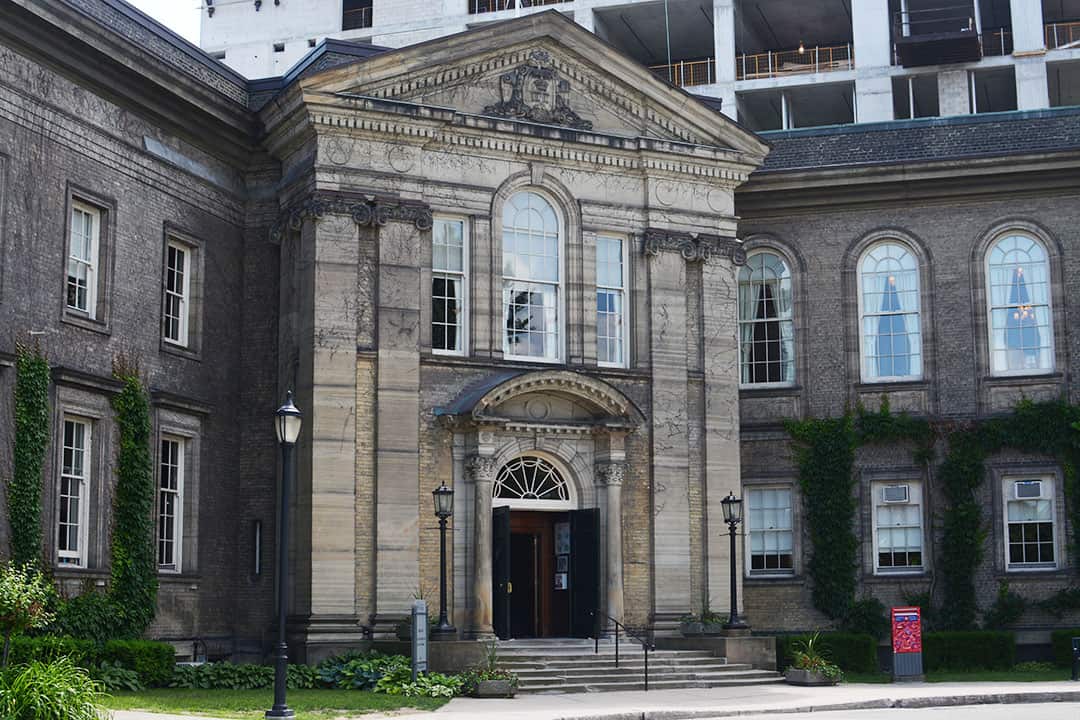The University of Toronto recently released its budget report for the next academic year, with long-range budget guidelines for 2020–2021 and the following four years.
International enrollment, developing new revenue streams, and implementing the recommendations of the Presidential & Provostial Task Force for Mental Health are all central aspects of the report, which was profoundly shaped by the third Strategic Mandate Agreement (SMA3), the first such agreement negotiated under the Doug Ford government.
SMAs are agreements between postsecondary institutions and the province on how much funding schools will receive.
Domestic and international enrollment
The Ontario government first announced a 10 per cent cut to domestic tuition in January 2019, and announced at the same time that tuition would be frozen for the 2020–2021 and 2021–2022 academic years.
International fees are unaffected by the cuts, and will rise by an average of 5.3 per cent next year.
The university’s revenue, the majority of which comes from enrollment tuition and fees, is expected to rise by 8.6 per cent, taking into account the domestic tuition freeze and increased international tuition and enrollment.
The decision to increase international fees was made in consideration of the province’s choice to reduce operational grants by $750 for every international student enrolled in an undergraduate or master’s program.
Divisions still aim to increase the amount of international students, and to diversify that population to be more reflective of U of T’s global partnerships. The university expects the proportion of international students to rise to 28 per cent in the next academic year.
Furthermore, up to six per cent of each division’s international tuition will go to a scholarship fund for top international students. These scholarships will be awarded based on a variety of factors, including merit and need, and the amount invested is expected to grow from $14.7 million in 2020–2021 to $75.8 million in 2024–2025.
The provost has also planned to allocate money from the University Fund — a non-formulaic portion of the budget that’s used to meet institutional academic goals — to increase staff to provide international students with services like immigration advising.
International enrollment represents the greatest source of revenue for the university as of last year. However, in light of changes in funding from the provincial government and caps on tuition and enrollment, U of T has developed a plan for a new revenue stream called the Four Corners Strategy.
This strategy aims to generate $50 million in revenue per year by 2033 through the development of 3.5 million square feet of new space dedicated to campus services, amenities, and new office and retail space.
U of T would use ongoing leasing revenue to fund the early stages of proposed projects, and would invest the money made back into research and teaching.
The SMA3
Under the SMA3, which will be implemented starting in the 2020–2021 academic year and ends in 2025, performance-based funding will rise from 25 to 60 per cent of total provincial operating grants by 2024–2025. This would represent an increase within the university’s total revenue from 5.6 per cent to 11.7 per cent.
In addition, the university must maintain enrollment within a flexibility range of three per cent of a fixed amount. While the university continues to advocate for another 1,000 master’s and 1,000 doctoral spaces, these have not been approved under the current agreement.
Mental health and diversity
The University Fund has been allocated across four categories, including Student Success and Experience, which receives $6 million, and Faculty Diversity and Renewal, which receives $2.3 million.
Support for mental health service is one of the major pillars of the Student Success and Experience category. Efforts will focus on implementing the recommendations of the Presidential & Provostial Task Force for Mental Health, which includes restructuring mental health services, appointing a tri-campus clinical director, and expanding counselling options.
Faculty Diversity and Renewal notably aims to support the hiring of 20 Black and Indigenous faculty members. This is consistent with U of T’s previous goal of hiring 80 faculty and 20 staff members from underrepresented groups.
COVID-19 and university comments
The future of the budget is deeply uncertain due to the COVID-19 pandemic. In an email to The Varsity, a U of T spokesperson wrote that the cost implications of the pandemic are still unknown, and that the budget was created under the expectation of normal circumstances.
The spokesperson added, “the University’s focus is on ensuring our students complete their term, provide a place for those students in residence who cannot return home, and support critical COVID-19 research. We are also providing emergency assistance grants for undergraduate and graduate students impacted by COVID-19 and who need immediate short-term financial relief because of unexpected expenses.”
The spokesperson also reaffirmed that the university’s “budget commitments to student mental health and our response to the task force [remain] the same.”
The Governing Council will vote on the proposed budget on April 2.


